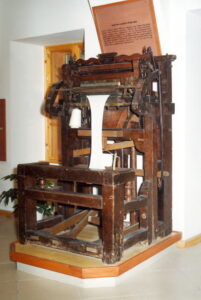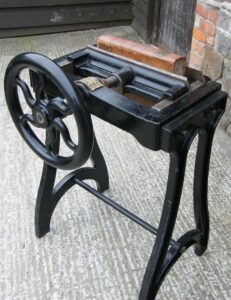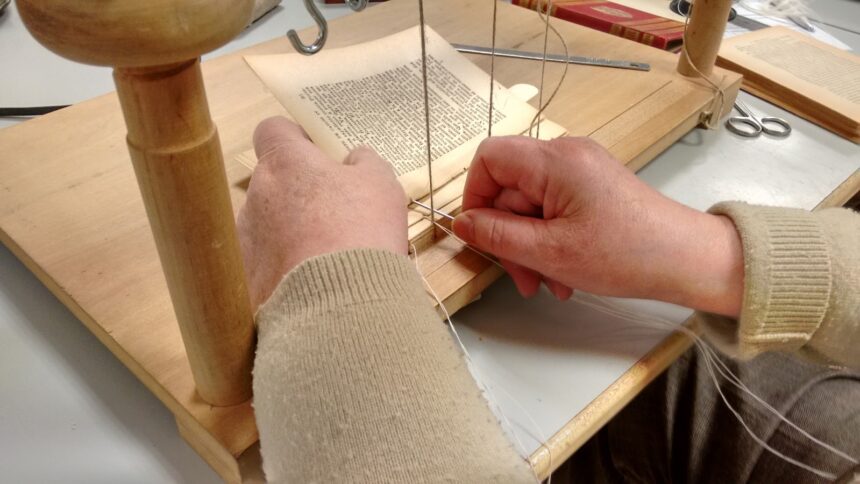In an era where the digital world dominates, the art of bookbinding remains a cherished craft. The roller backer has become one of the largest businesses in the US, revolutionizing how we approach this age-old practice. With its growing popularity, the roller backer is steadily transforming the bookbinding industry across the country.
Introduction to the Roller Backer
Bookbinding has a rich history dating back centuries. From hand-sewn folios to sophisticated printing presses, the methods have evolved significantly. Enter the roller backer—a modern marvel in the bookbinding world. This tool is essential for stationery enthusiasts who value precision and efficiency in their craft.
The roller backer streamlines the bookbinding process. It allows creators to achieve professional results without extensive manual labor. This blog will explore the roller backer’s benefits, its working mechanism, and practical steps to enhance your bookbinding projects.

Understanding Traditional Book Binding
Overview of Traditional Methods
Traditional bookbinding encompasses several time-honored techniques that have each played a significant role in the evolution of book production.
- Saddle Stitching: This method involves folding sheets together and staple-binding them through the fold line. It’s widely used for booklets, brochures, and magazines due to its simplicity and cost-effectiveness. While saddle stitching is efficient for smaller booklets, it becomes impractical for thicker volumes.
- Perfect Binding: Commonly seen in softcover books, perfect binding entails gluing the edges of stacked pages together to form a spine, which is then attached to a cover. The result is a clean, professional-looking book. However, perfect binding often leads to compromised durability, as the glue can weaken over time, causing pages to detach.
- Case Binding: Often associated with hardcover books, case binding is a meticulous process where sewn or glued book blocks are affixed to rigid covers. This method stands out for its durability and aesthetic appeal, making it ideal for premium quality books and collectors’ editions. Yet, case binding is labor-intensive and requires advanced skills and equipment.
Challenges
Despite the rich tradition and enduring appeal of these methods, traditional bookbinding faces several challenges:
- Labour-Intensive Processes: Techniques like case binding demand significant manual effort, skill, and time, making them less feasible for large-scale production or amateurs.
- Material Costs: High-quality materials required for traditional binding methods, such as special adhesives and durable covers, can be expensive, increasing overall production costs.
- Durability Issues: Methods like perfect binding may not withstand the test of time, as glued spines can deteriorate, leading to loose pages and compromised structural integrity.
- Limited Flexibility: Traditional methods often need more versatility for modern, on-demand publishing. Adapting these techniques for small runs or custom projects can be challenging and inefficient.
You May Also Like To Read: Enhancing Productivity with Listcrollers
Step-by-Step Guide to Using the Roller Backer
Preparing Your Materials
Before you begin, gather all necessary materials, including your roller backer, binding glue, book covers, and pages. Ensure that your workspace is clean and organized to facilitate a smooth binding process.
Setting Up the Roller Backer
Position the roller backer on a stable surface. Adjust the settings according to the thickness of your book. This step is crucial for achieving the right pressure and alignment during the binding process.
Applying the Glue
Apply a thin layer of binding glue to the spine of your book. Use the roller backer to evenly distribute the glue, ensuring that it covers the entire surface. This step helps to create a strong and durable bond between the pages and the cover.
Aligning the Book
Place your book in the roller backer, ensuring that the spine is correctly aligned with the rollers. Gently roll the tool over the spine, applying even pressure to secure the binding. Repeat this process a few times to ensure that the glue sets properly.
How the Roller Backer Works
Mechanism of the Roller Backer
The roller backer operates on a simple yet effective mechanism. It consists of two rollers that apply pressure to the book’s spine, ensuring a tight and secure binding. The adjustable settings allow users to customize the pressure based on the thickness of the book, making it versatile for various projects.

Detailed Process
- Preparation: Gather materials and set up the roller backer.
- Glue Application: Apply glue to the spine and distribute it evenly.
- Alignment: Place the book in the roller backer and align the spine.
- Rolling: Roll the tool over the spine to secure the binding. Repeat as needed.
- Drying: Allow the glue to dry for the recommended time before removing the book from the roller backer.
Visual Aids
For a more comprehensive understanding, consider using diagrams or instructional videos. These visual aids can provide additional clarity and help you perfect your bookbinding technique with the roller backer.
Benefits of the Roller Backer
Streamlining the Process
The roller backer is a game-changer for bookbinders. Its design allows users to bind books more quickly and efficiently than traditional methods. This tool reduces the time needed to complete each project, enabling you to focus on creativity and quality.
Cost-Effective Solution
One of the significant advantages of using the roller backer is its cost-effectiveness. By minimizing labor and material wastage, this tool can save you money in the long run. Whether you’re a hobbyist or a professional, the roller backer offers a budget-friendly solution for all your bookbinding needs.
Consistency
Consistency is crucial in bookbinding, and the roller backer delivers just that. This tool ensures that each binding is accurate and uniform, resulting in a polished final product. The roller backer eliminates the guesswork, making it easier to achieve professional-grade results every time.
Improved Efficiency
The roller backer significantly speeds up the bookbinding process. Its efficient design allows users to complete projects in less time, enhancing productivity and freeing up time for other creative endeavors.
Enhanced Precision
Precision is a critical aspect of bookbinding, and the roller backer excels in this area. It ensures that each binding is consistent and accurate, resulting in professional-quality books.
User-Friendly Design
The roller backer is designed with ease of use in mind. Its straightforward mechanism and adjustable settings make it accessible for beginners, while its precision and efficiency appeal to experienced bookbinders.
Durability
The roller backer significantly enhances the durability of your bindings. By evenly distributing glue and applying consistent pressure, this tool ensures a robust bond between pages and covers. This results in books that can withstand wear and tear, making them ideal for frequent use and long-term storage.
Versatility
Another notable benefit of the roller backer is its versatility. It is suitable for a wide range of bookbinding projects, from thin pamphlets to thick volumes. The adjustable settings allow you to customize the tool to fit various book thicknesses and binding styles, making it a valuable addition to any bookbinder’s toolkit.
Conclusion
The roller backer has transformed the bookbinding industry, offering a modern solution to an age-old craft. Its benefits, including improved efficiency, enhanced precision, cost-effectiveness, and user-friendly design, make it a must-have tool for stationery enthusiasts.
For those passionate about bookbinding, the roller backer is more than just a tool—it’s a gateway to achieving professional results with ease. We encourage you to share your experiences with the roller backer in the comments and explore how this innovative tool can elevate your bookbinding projects.
Frequently Asked Questions (FAQs)
What is a roller backer and how does it work?
Ans: A roller backer is a modern bookbinding tool that streamlines the binding process by applying even pressure along the spine of a book. It consists of two adjustable rollers designed to accommodate different book thicknesses. By rolling over the glued spine, it ensures tight, secure, and professional-quality binding.
Why should I use a roller backer instead of traditional bookbinding methods?
Ans: The roller backer enhances efficiency, precision, and consistency in bookbinding, significantly reducing the time and effort needed compared to traditional methods. It also minimizes material wastage, making it a cost-effective tool for both hobbyists and professionals.
Can beginners use the roller backer, or is it only for professionals?
Ans: The roller backer is user-friendly and designed for ease of use, making it accessible to beginners. Its straightforward mechanism and adjustable settings allow users of all skill levels to achieve professional-grade results.
What materials do I need to use the roller backer effectively?
Ans: To use the roller backer, you will need binding glue, book covers, pages, and a clean, organized workspace. Ensuring that your materials are well-prepared and your roller backer is properly set up is crucial for a smooth binding process.
How do I maintain and clean my roller backer?
Ans: Regular maintenance involves cleaning the rollers to remove any glue residue and checking for wear and tear. Use a damp cloth to wipe down the rollers after each use and periodically inspect the tool to ensure it remains in good working condition.
Can the roller backer be used for different types of bookbinding projects?
Ans: Yes, the roller backer is versatile and can be used for various bookbinding projects. Its adjustable settings allow it to accommodate different book thicknesses, making it suitable for everything from simple notebooks to more complex binding tasks.







